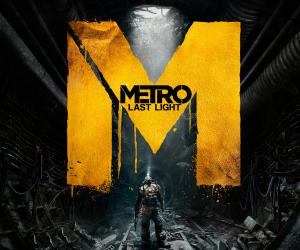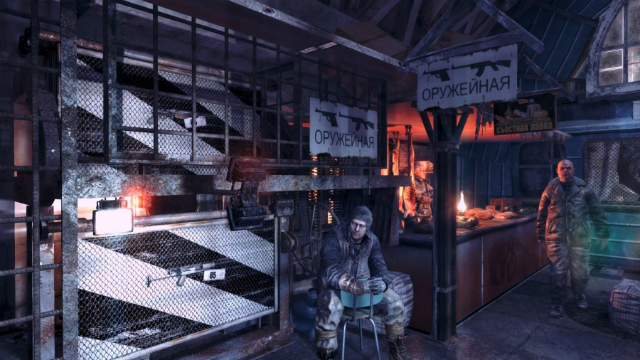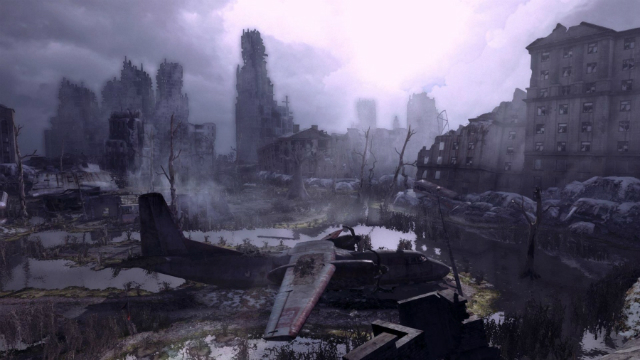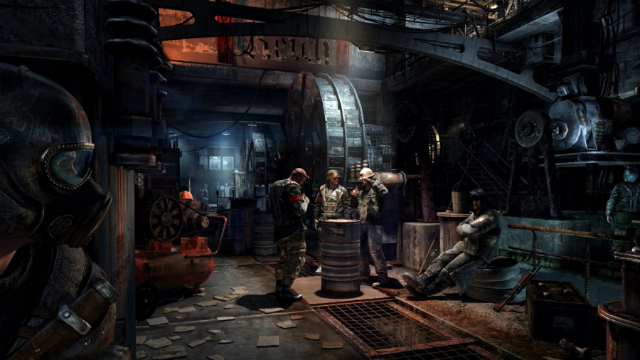 Metro 2033 wasn’t a masterpiece by any stretch of the imagination. It was a decent way to spend a few hours. The decision to make a sequel isn’t out of fan-desire, although there will be many looking forward to Last Light, but out of its developers’ need to take flawed gem, and make it something great.
Metro 2033 wasn’t a masterpiece by any stretch of the imagination. It was a decent way to spend a few hours. The decision to make a sequel isn’t out of fan-desire, although there will be many looking forward to Last Light, but out of its developers’ need to take flawed gem, and make it something great.
A number of hurdles are obvious, even on the game’s surface. For one this isn’t the easiest game to sell. It’s dark, grimy and bathes in its own mythology. In the original game the history of this world, and the nuclear horror that forced humanity underground, is absorbed rather than dished out in lumps of exposition.
This continues here in Last Light. Sadness clings to every surface and is in the face of every occupant because there’s little else down here, and nothing else up there.
Last Light picks up Artyom’s story after the original, picking the darker of the game’s two endings. Artyom is living with his decision to eliminate the Dark Ones, a new race of mutated and telepathic former-humans. Only he was only largely successful – one survived.
Set against a backdrop of looming civil war in the network of subterranean tunnels under Moscow, forces are seeking the remaining Dark One in the hope of utilising its powers to swing the tide of battle in their favour.

My time with the game starts roughly a quarter of the way through the story and above ground as Artyom and a comrade venture through the wreckage of a plane that dropped from the sky on the day the world began to burn.
Running on a high end PC, the game was stunning – most noticeably in the fluid animations of the mutant creatures that stalk you. It’s a world that couldn’t help but be painted in greys and browns, so it doesn’t pop like a Far Cry 3 or Tomb Raider, but it is immensely detailed in a similar way.
The Xbox 360 version also running was, as you’d expect, less impressive, but it remains one of the more technically impressive games running on the seven-year-old system.
Before we got stuck into the game we were told by its developers that Metro: Last Light shrugs off a lot of the conventions of the first person shooter in favour of exploration. It was being pitched as something closer to an adventure game than a straight shooter, but that’s not how it works in practise.
Despite the rhetoric, this is definitely an FPS.
There are opportunities to explore off the main path but in the few hours I spent with the game they never really amounted to much and ultimately felt pointless. However, it is a lot slower paced than many other shooters and that slower pace does have its benefits.
Rather than a near-constant onslaught of encounters only broken up by short respites, there are large sections between battles. At times these periods of calm verge on tedium, but most of the time they benefit the ebb and flow of the gameplay.

When the proverbial does hit the fan things get difficult, and sometimes frustrating. Seemingly designed to make players want to avoid combat, there are times when avoiding it is also impossible, and the game doesn’t quite strike the balance required.
When the challenge is fair and balanced combat feels meaty. Unfortunately a smattering of QTEs, usually when being attacked by creatures, feel totally unnecessary. Their infrequency also serves to make them more irritating than the quick adrenaline shots they were intended as.
Artyom is able to carry three weapons which can be customised at stores and swapped for enemy weapons on the fly. Military grade ammo serves as currency in this world, but it’s currency that can be put to more important life-saving use should the need arise. It’s a neat mechanic but the quality of its implementation means it is often forgotten about. Finding regular ammo is rarely a problem either.
The gas mask mechanic from Metro 2033 also makes a return. At various points in the game you will need to wear your mask to survive an area. The amount of clean oxygen you have also puts you under the pressure of a time limit, with new canisters topping up the countdown on Artyom’s wrist.
It is a system that had its critics when the original was released, and there’s little here in the way of remedy. Much like the currency/ammo dilemma it is a nice feature in principle, but the extent to which it interferes with gameplay makes it a regular annoyance.

After the demo’s first hectic exploits on the surface the game heads underground to a hub section. Here, with your weapons holstered, Artyom can slowly plod his way through the metro system’s hives of activity. There are shops, challenges to tackle, little in-jokes and things to find, but the whole time you are largely being urged forward to the next part of your adventure.
Metro: Last Light is a considered and methodical title suffering from a sort of identity crisis. While its slow-pace does match its tone and the suspenseful tale it weaves, it also hinders the moments of action when urgency and precision are needed.
It’s a game with the tools to be something different and somewhat unique despite its appearances, but several of the missteps made in the original Metro have been made again. Whether A4 Games have achieved greatness here is yet to be seen, but on this evidence it’s still just out of reach.
Metro: Last Light will be released on May 17 in Europe and May 14 in North America – for Xbox 360, PlayStation 3 and Windows PC.






